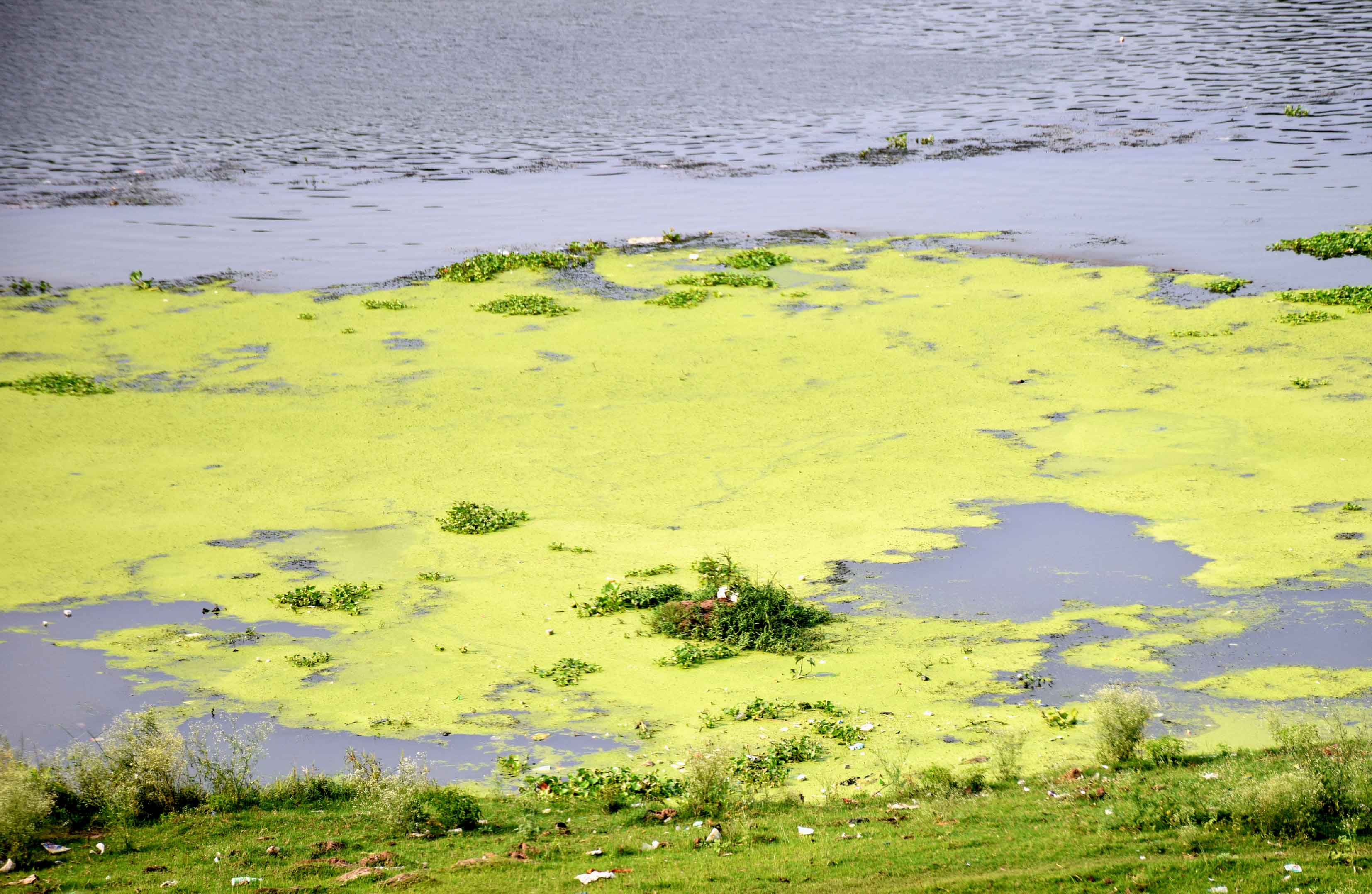Not all blooms bring joy to the beholder and one of these are the floating algae found in the Subernarekha, the lifeline of Singhbhum.
Floating algae was found along different stretches of the river between Domuhani in Sonari and Ghatshila, which is 45km from Jamshedpur.
Due to stagnant water, the green-coloured algae is spreading fast along the 10km stretch of the river from Domuhani to Jai Prakash Narayan Setu (or Mango bridge), Bhuiyandih ghat and beyond that in downstream Subernarekha upto Ghatshila, close to the Bengal border.
Algal blooming began in the last week of May, the peak of summer.
Environmentalists said if measures were not taken to prevent its spread, it might endanger aquatic life, as the algae results in fast depletion of oxygen, which is required for plants and animals to survive.
“The toxins that the algae produce can lead to death of fishes and other aquatic animals. It also leads to a bad odour in the water,” said Raja Ghosh, an environmentalist.
He said the algal bloom is taking place due to stagnant water.
“Despite frequent rains in pre-monsoon months, the level of water in the Subernarekha is much less. This is resulting in algal blooming which is unhealthy for aquatic life,' he said.
The algae have short lifespan but they use up dissolved oxygen in water, killing fish and other aquatic life. Fish struggle to breathe if oxygen in water gets less than 4PPM (parts per million). According to a study, algae results in water pollution due to cultural eutrophication (pollution in water due to excessive nitrogen and phosphorus).
The regional officer of the Jharkhand State Pollution Control Board (JSPCB), Suresh Paswan, also blamed stagnant water for the spread of algae.
“Despite good showers in May and June, the water level of the Subernarekha is below the desired level. Algae is therefore thriving in the river,' Paswan told The Telegraph Online.
He, however, said it was a matter of a few days.
“We are expecting the arrival of monsoon in another week. The monsoon showers will help in getting rid of algae,” he said.
He added that algal bloom is less harmful than water hyacinth (jal kumbhi).
“The hyacinth is found in the Subernarekha and the connecting Kharkai river. But its spread is not alarming this year,” he added.










